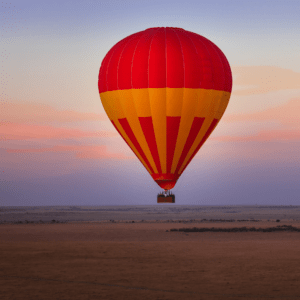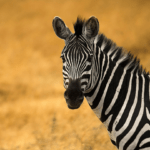As families look forward to their Easter holiday safari adventures, having the chance to take beautiful pictures of Africa’s amazing wildlife is one of the opportunities that presents itself.
Capturing these graceful giants while they reside in their natural habitats is more than just taking some pictures; it also helps to create a lasting memory while at the same time instilling a deeper sense of appreciation for nature in young minds.
With this detailed guide, families can learn and master the art of wildlife photography and return home with a breathtaking collection of photos that capture the real essence of their unforgettable trip.
The Joys of Wildlife Photography
Being involved in wildlife photography as a family is a rewarding experience that goes beyond taking nice pictures. It strengthens relationships, boosts communication and teamwork, and fosters a shared appreciation and respect for nature.
As you and your children come together to identify possible subjects, choose shots, and snap fleeting moments, they will leave you with everlasting memories for years to come.
Ethical Photography Practices

When taking pictures of animals in their natural habitats, you must first put the animals’ well-being and safety at the forefront of your mind. Our guides, who are well-versed in maintaining appropriate distances, will see to it that you do not disturb or harass the creatures you encounter and will ensure you do not violate the animals’ right to be.
This ethical approach, not only defends the wildlife but also enables you to take more authentic and captivating shots, as the animals will remain in their natural state without being disturbed by human presence.
Mastering Camera Techniques
To shoot stunning pictures one must have an understanding of how to work your camera, so that you can shoot clear, bright images of fast-moving subjects with the help of your manual settings.
Tweaking shutter speed, aperture and ISO allows you to stop action or produce dramatic bokeh ensuring that your photos aren’t just snapshots but rather picture masterpieces.
Aperture

The aperture setting which controls the depth of field in your images is an important parameter. The wider the aperture (lower f-stop number) can create a beautiful result with the bokeh effect, which blurs the background and draws focus on your subject.
The depth of field will be increased by a narrower aperture (a higher f-stop number) this results in sharpening of both the foreground and the background.
ISO
The ISO setting is a parameter of the camera that sets its sensitivity to light. In low-light conditions, like early in the morning and evening game drives, you may need to raise the ISO to make up for the reduced luminosity. But, if you increase ISO settings too much, the noise or grain will be added to the images, so finding a balance is crucial in this case.
Putting the Right Equipment into Practice
Although not necessary, you can achieve a higher quality of wildlife photos through a versatile telephoto lens with a focal length from 200mm to 600mm. These lenses enable you to bring the action up close without affecting the animals, which allows you to get closer and be sure you don’t miss anything.
Including Composition Techniques in Captivating Images
The thing that can turn wildlife photography from good to great, can either be the quality of light or composition. Make use of golden hours at the beginning and end of the day, when the warm and soft light reveals enchanted scenes.
Moreover, pay attention to the compositional rules, including the rule of thirds, leading lines, and framing, which will help you to take stunningly beautiful and balanced photographs.
The Rule of Thirds

This composition technique differs from others in that it divides your frame into nine equal sections using two horizontal or two vertical lines. Positioning your subject in such a manner or at crossroadlines can produce a more pleasing and balanced composition.
Leading Lines
The leading lines, which are components within the frame, can be used as a tool of direction for the viewer’s eyes toward the main object. Such are the natural assets, such as rivers, trails, a tree branch, or even an animal’s eye or body movement, that can serve as a subject for the picture.
Framing
Do not miss any natural frames that can be found in your environment for instance tree branches, rock formations, or even those made by animals. Shooting from different angles can definitely create a greater sense of depth and interest, thereby naturally drawing the viewer’s eyes to the main subject.
Capturing the Entire Experience
Although you can be absolutely lost in the moment when you zoom in on an animal’s face, please keep in mind documenting the entire safari journey as well. In general, shots of unbelievable landscapes, cultural interactions, and even funny pictures of your family members can picture a more comprehensive story of your adventure.
Patience and Persistence: The Pillars of Success

Wildlife photography is a skill that involves the use of a lot of patience and perseverance. Of course, that does not mean that all the important moments should be planned. In fact, some of the most vivid memories can arise when something surprising happens.
So, make sure that your kids also embrace this mindset. To capture those magical moments, you just need to be alert and with a camera in your hand because those chance moments may flee.
Editing and Saving Your Moments
Finally, after the safari, take some time to edit and improve your pictures by fine-tuning exposure, contrast, and color to the best results of your photographs. Then, share your incredible experiences and photographs with friends and family, inspiring others to embark on their own adventures while raising awareness about the importance of conservation efforts.
Spend Easter this year on a Kenya safari by Shian Safaris, which is a once-in-a-lifetime adventure. They will fill the role of the guides and promote sustainable tourism. Your family will get the best of both worlds—the opportunity to witness the grandeur of the African wildlife up close and ensure their protection for future generations. Take these photography tips with you and use them to their fullest extent when taking pictures of the different landscapes and ecosystems you encounter. When you get back home your photo gallery will be a collection of incredible images that showcase your incredible safari experience.





